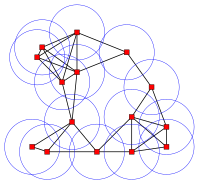Combinatorial geometry

Combinatorial geometry is a math topic that is all about shapes and their properties. These shapes can be simple, like squares or triangles, or more complicated, like a star or a house.
Combinatorial geometry is like playing with toys called "blocks." Just like how you can stack and arrange your blocks in different ways to make different shapes, combinatorial geometry is all about doing the same thing with shapes.
In combinatorial geometry, we use words like "vertices," "edges," and "faces." These words are like instructions for how to build shapes with blocks.
Vertices are like the corners of the blocks, the point where the sides meet. Edges are like the lines that connect the corners of the blocks. Faces are like the flat surfaces of the blocks.
By arranging vertices, edges, and faces in different ways, we can create all sorts of shapes. We can create squares, triangles, rectangles, and even more complicated shapes like a pyramid or a sphere.
Combinatorial geometry is also useful for understanding the properties of shapes. We can count how many vertices or edges a shape has, or how many faces it has. We can also figure out if a shape is symmetrical, meaning it looks the same on both sides.
So next time you play with your blocks, remember that you are doing combinatorial geometry! By stacking and arranging your blocks in different ways, you are creating shapes and exploring their properties.
Combinatorial geometry is like playing with toys called "blocks." Just like how you can stack and arrange your blocks in different ways to make different shapes, combinatorial geometry is all about doing the same thing with shapes.
In combinatorial geometry, we use words like "vertices," "edges," and "faces." These words are like instructions for how to build shapes with blocks.
Vertices are like the corners of the blocks, the point where the sides meet. Edges are like the lines that connect the corners of the blocks. Faces are like the flat surfaces of the blocks.
By arranging vertices, edges, and faces in different ways, we can create all sorts of shapes. We can create squares, triangles, rectangles, and even more complicated shapes like a pyramid or a sphere.
Combinatorial geometry is also useful for understanding the properties of shapes. We can count how many vertices or edges a shape has, or how many faces it has. We can also figure out if a shape is symmetrical, meaning it looks the same on both sides.
So next time you play with your blocks, remember that you are doing combinatorial geometry! By stacking and arranging your blocks in different ways, you are creating shapes and exploring their properties.
Related topics others have asked about:
